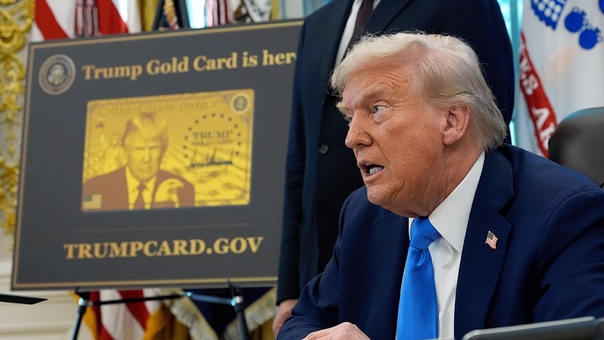The ultimate moving abroad checklist: Step-by-step guide to a smooth relocation

Moving abroad requires 3–6 months of preparation across visas, finances, healthcare, and tax compliance. This comprehensive moving abroad checklist covers every step for US citizens relocating internationally, including IRS reporting requirements that 9 million Americans overseas must follow. From passport renewal to FBAR filing, we break down the exact timeline, costs, and documents you need for a smooth international relocation.
This article is brought to you by Taxes for Expats – we help Americans abroad stay compliant with ever-changing IRS rules while they build new lives overseas. Our moving overseas checklist keeps you focused on what matters most, like all the inspiring things you get to do to make your new destination feel like home, and for US citizens, our tax experts are here to help you stay compliant with Uncle Sam.
Why do Americans move abroad
Most Americans start dreaming about life overseas when the promise of something new – better work, lower costs, or richer experiences – outweighs the comfort of home. But turning that dream into reality takes more than courage; it takes a clear checklist that turns every challenge into a manageable step forward.
- Many move abroad to grow their careers or explore new industries, turning opportunity into action. With almost 4.4 million Americans now living in other countries, moving abroad has become a natural step for professionals and families seeking growth and new experiences.
- Others go abroad for school or global work, where paperwork is key – getting an International Driving Permit through AAA or AATA, joining STEP for safety alerts, and setting up mail forwarding to keep papers safe. With 13.8% of US workers now working from home, remote jobs make it easier than ever to build an international career.
- Some move abroad for lifestyle or to join family members, focusing on smart packing, protecting electronics, and finishing travel plans early. Top spots for Americans include Mexico with about 797,000 US-born residents, Canada with over 256,000, and the United Kingdom with nearly 199,000.
- For many, financial freedom is a reason to relocate, so the final week is about protecting income and compliance by checking access to money, keeping documents on hand, and noting that the Foreign Earned Income Exclusion allows up to $130,000 of income to qualify abroad, while monitoring FBAR thresholds for foreign accounts above $10,000.
- A growing number move abroad to reinvent daily life – embracing new cultures, cuisines, and rhythms – and find comfort in quick steps after arrival like registering a local address or tax number, activating a SIM card, and staying enrolled in STEP so their relocation feels secure from the start.
Before you move abroad
What makes a move to a different country feel smooth instead of stressful? The answer lies in careful planning that begins months before you board the plane. The six-to-twelve-month and one-to-three-month period before departure forms the base of your moving abroad checklist, setting up the paperwork, money, and legal compliance you’ll need for a confident start. For Americans managing worldwide income, working with a team like Taxes for Expats helps you stay compliant while you focus on relocating abroad.
Documents and identity
Everything starts with your documents. A valid passport opens every door, so check the expiry date early. Most countries expect at least six months of validity when you enter. Renew on time and keep extra blank pages ready. Save certified copies and digital scans in a secure cloud folder, with paper copies stored safely at home.
Collect what proves who you are – birth and marriage certificates, education records, and background checks from the FBI when needed. Apostilles confirm that your papers are valid abroad. The State Department charges $20 per document using Form DS-4194, so plan your budget early. Once you have these in order, you’ll find that every other task – school applications, banking, or visas – fits neatly into place.

Visa and residency planning
Visa choices set timelines and budgets. Fees, processing, and document checks vary by country, so rely on official sources and begin early in your international move plan.
Step 1: Start by choosing the visa that matches your goal. Work routes include the UK Skilled Worker visa, Australia’s Skills in Demand (subclass 482), Canada’s work permits, and New Zealand’s Accredited Employer Work Visa – each with its own sponsorship and skill rules.
Step 2: Once you’ve identified the right category, calculate what it will cost. The UK Skilled Worker visa ranges from £769 to £1,751, plus an Immigration Health Surcharge of £1,035 per year, and proof of £1,270 in savings. Australia’s subclass 482 visa costs about AUD 3,210 for the main applicant, while Canada’s open work permit fees total CAD 255 (CAD 155 permit + CAD 100 holder fee).
Step 3: Map out processing times to avoid surprises. New Zealand’s AEWV decisions typically take about five weeks, and Canada’s IRCC provides an online calculator showing current estimates by country and visa type.
Step 4: Prepare documents carefully to prevent delays. The FBI’s Identity History Summary can be ordered online, and apostilles are required for any paperwork used under the Hague Convention. Each federal apostille costs $20, so build mailing time into your schedule.
Step 5: Arrange your driving documents early. Only AAA and AATA can issue International Driving Permits for US license holders, and you must carry both together when you drive abroad.
Step 6: Confirm health insurance and proof of funds requirements. Schengen visa rules require medical coverage of at least €30,000 valid across all member countries. Keep these papers, along with your financial statements and registrations, ready before your flight.
Step 7: Submit your application and track updates. Use your destination’s official immigration portal for uploads, payments, and biometric scheduling. Keep digital and printed copies of receipts, tracking numbers, and correspondence.
Step 8: Plan for arrival and next steps. Note visa activation dates, post-entry registration rules, and renewal timelines. Once approved, book travel within the visa’s validity window and prepare supporting documents for border control.
| Typical visa route | Base application fee (in USD) |
|---|---|
| UK’s skilled worker visa | 1,000 to 2,300 |
| Australian skills in demand, subclass 482 | 2,000 (main applicant) |
| Canadian open work permit | 110 work permit, plus 72 for open permit holder fee |
| German national visa for employment, long stay D | 87 |
Money and banking
Planning finances early keeps your move from turning into a scramble later. Imagine a family landing in a new city with rent due, a security deposit to pay, and currency fees eating into their budget. Clear planning protects savings and gives peace of mind through every stage of relocating abroad.
- Set up an international or multi-currency account to manage conversions and keep savings separate from daily spending.
- Complete FATCA onboarding when banks ask for self-certification, since US citizens must report certain foreign assets on Form 8938 once thresholds apply.
- Prepare proof of funds, recent bank statements, and job letters so landlords or visa officers can verify your financial readiness.
NOTE! Converting your currency, tracking exchange rates, and dealing with banks go hand in hand with smart budgeting. Using Numbeo’s recent data gives an idea of how living costs compare between the US and other regions. The table illustrates what rent and utilities might cost if you choose to live on another continent.
| Region & country | Rent (1-BR, city centre) | Utilities |
|---|---|---|
| North America (United States) | $1,728.96 | $210.12 |
| Africa (South Africa) | R 7,934.31 | R 2,103.06 |
| Asia (Singapore) | S$ 3,929.41 | S$ 202.46 |
| Europe (France) | € 757.45 | € 185.47 |
| South America (Brazil) | R$ 1,872.49 | R$ 389.69 |
Include estimated rent and utilities in your relocation budget, since those costs may later qualify under the Foreign housing exclusion.
Taxes and financial compliance
As the IRS explains, Federal law requires US citizens and resident aliens to report their worldwide income, including income from foreign trusts and foreign bank and other financial accounts. That reporting happens on Form 1040, your annual income tax return. When moving abroad, staying compliant begins with understanding these key reporting tools.
- Foreign Earned Income Exclusion (FEIE): Lets you exclude up to $130,000 of earned income for 2025 if you qualify under FEIE rules. Use our FEIE calculator to find your exact exclusion amount based on your income and move dates.
- Foreign Tax Credit (FTC): Allows you to offset US tax with taxes you paid to a foreign government on income not covered by the FEIE.
- Foreign Bank Account Report (FBAR): Requires you to file FinCEN Form 114 when your foreign accounts exceed $10,000 at any time during the year.
- Foreign Account Tax Compliance Act (FATCA): Mandates Form 8938 for reporting certain foreign assets when you meet threshold amounts based on filing status and residence.
NOTE! Expats get an automatic filing extension to June 15, but interest still accrues after April 15. You can request another extension to October 15, and even a final one to December 15, by written request to the IRS. Missing these dates can lead to penalties, so set reminders early and file on time to keep your record clean.

Health and insurance
Before moving to a new country, check vaccine and entry-health requirements through the CDC and your destination’s health ministry. Schedule vaccinations about 4 to 6 weeks ahead of departure. Bring prescriptions in labeled containers, along with a doctor’s note listing generic names. Because Medicare rarely covers care outside the United States, international medical insurance is an essential part of your relocation plan when moving abroad.
NOTE! If you continue paying into local social insurance, look into any Totalization agreement in place to ensure your contributions count toward your US Social Security record.
Education and family logistics
Many people believe that schools abroad will handle record transfers automatically. In truth, having everything ready yourself makes enrollment smoother and faster. Keeping official copies also supports scholarship reviews and special-education services.
- Gather transcripts, report cards, diplomas, and vaccination records with certified translations before moving.
- Include IEPs or accommodation plans for children with special needs.
- Organize passports, visas, and consent letters for family members traveling separately.
- Budget for application fees, uniforms, transportation, and extracurricular costs in the new country.
By completing these actions in our first checklist before moving, you give your relocation the structure and calm it deserves. The next phase focuses on your countdown to departure – those last key weeks that turn preparation into reality.
Final tasks to complete before relocating
You’ve spent the long months of planning and the big decisions that shape your move. Now, time is closing in, and this next phase – the execution stage – keeps every detail on track. From one month until the moment you travel, these final things to do ensure your moving abroad journey stays smooth, organized, and stress-free. Take a quick look at this checklist to make sure nothing slips through the cracks.
- Housing and shipping logistics: Book your movers early and confirm they are FMC licensed before signing any contract. Arrange storage if your shipment leaves before you do, and double-check customs paperwork so the boxes clear inspection easily. If a car is going with you, follow CBP’s 72-hour export rule, and remember that lithium batteries must travel in carry-on luggage during an international move.
- Pet relocation: Review APHIS guidelines for your destination and make sure your pet’s microchip and rabies shots meet the right standards. Schedule the final vet visit for health certificates, and allow time for USDA endorsement if the country needs it. Airlines require crates that follow IATA size rules, so your pet can stand and turn comfortably on the journey.
- Cyber and communications setup: Contact your carrier to unlock your phone and set up a local SIM or eSIM to keep costs low after landing. Turn on two-factor authentication for your banking and email accounts, and store your passwords safely in a manager or written copy kept apart from devices. This small step protects personal data and keeps communication open while you settle into new routines.
- Final travel preparation: Check that your passport still has at least six months of validity and print extra copies of all key travel documents. Keep prescription medicines in labeled containers and set aside cash or cards for the first few days abroad. Close utilities, confirm mail forwarding, and take a moment with family members to mark the milestone. You’re almost ready to start your next chapter.
Adapting to life after your arrival
If you’ve gotten to this point, congratulations are in order. You’ve set foot in the new destination you chose, but that’s not where things end. Our final checklist walks you through settling in and navigating your first days and months abroad – the integration phase that makes your international move truly complete.
Local registration and compliance
This stage is where you officially become part of your new community. Registration, documentation, and essential services all begin here, setting the tone for how smoothly you’ll live and work moving forward.
Step 1: Register your address with the local authority as soon as possible. In Berlin, residents must complete the Anmeldung within 14 days of arrival by booking an appointment at the Bürgeramt. This proof of residence is the foundation for many other administrative steps.
Step 2: Obtain your tax number or equivalent identification. In the UK, apply online for a National Insurance number; in Germany, your personal 11-digit IdNr remains with you for life and is used in every tax filing. Having this in place ensures you meet employment and financial reporting rules without delay.
Step 3: Open a local bank account to make daily life easier. Bring your passport, residence confirmation, and proof of address. Local banking gives you access to salary deposits, rent payments, and lower transaction fees – key for anyone making a long-term home abroad.
Step 4: Enroll in health coverage that suits your new country’s system. Many nations require residents to join a public or private health plan, while some employers handle enrollment on your behalf. Always keep copies of your health documents and insurance cards safely stored, as they’re often requested for registration or emergency care.

Settling into your new country
Once the paperwork is done, it’s time to build your rhythm. Start by setting up utilities and home internet so you can stay connected and comfortable. Next, learn how people move around your new city. In London, tap your contactless or Oyster card on TfL; in Tokyo, Suica works across trains and buses; in Singapore, EZ-Link supports both MRT and bus travel. Unlike in the United States, where driving is the norm, many countries rely on efficient public transport systems – embracing them early helps you feel at home. Make a short list of things to do every week so the new surroundings quickly become familiar.
Then, turn your focus toward education and community. You can find good schools through official resources like England’s school performance tables, Australia’s ACARA My School, or global listings such as the IB World Schools directory and the CIS membership list. For family members adjusting to the move, joining local clubs and language classes helps everyone settle in faster. Beyond that, online and offline expat communities like InterNations and Meetup are excellent spaces to meet others, share experiences, and ease the transition. Building these connections transforms a move from relocation into belonging – and strengthens the success of your international move.
Simplify your move abroad with expert support
Every great relocation doesn’t end at the airport – it begins when you start settling in, organizing your life, and feeling at home in a new country. This ultimate moving abroad checklist has guided you from pre-departure planning to integration abroad, ensuring that every detail is covered with care.
As you balance integration, community, and long-term planning, professional guidance can make all the difference in keeping the IRS off your back, and luckily, Taxes for Expats has been helping Americans abroad stay compliant and secure each year, and our team of specialists can support you with the same care and clarity every step of the way.

FAQ
Keep a US account, open a local account, and use transparent, low-fee transfer services while knowing your rights under CFPB remittance rules.
Medicare has limited coverage outside the US, and some Medigap policies may include foreign emergency care, so confirm specifics before travel.
Plan for about 5,000 to 15,000 dollars for a typical sea move, with size and route driving price. Recent ranges show 20 ft at 4,700 to 9,500 dollars and 40 ft at 7,800 to 16,000 dollars.
You get an automatic filing extension to June 15. You can extend to October 15, but interest starts from April 15.
Most people can keep getting Social Security while living in many countries, with some limits. In countries that have a Totalization agreement, your US work credits can combine with local contributions to help you stay eligible.
Not always for entry, work, or study. Many places require language proficiency later for settlement or citizenship, such as English B1 in the UK and German B1 in Germany.



